 Assessing turbulent healthcare supply chain midterms mid-decade
Assessing turbulent healthcare supply chain midterms mid-decade
What challenges must industry, profession address before welcoming the 2030s?
By Rick Dana Barlow
Society may have reveled during the Roaring 20s of the 20th century and anticipated enjoying the Soaring 20s a century later as both began with the onset of a global pandemic. But now mid-decade 100 years later, the 20s of the 21st century actually have been anything but boring — likely more goring to clinical, financial and operational health.
Leaders & Luminaries identified more than 20 challenges the healthcare supply chain may be facing and struggling to accept, adopt and implement as the industry and profession marches toward 2030 and a new decade that hopefully contrasts starkly with the current one — just in a transpositional way than that of the 1920s to 1930s.
L&L asked esteemed members of the Bellwether Community to assess financial and operational momentum throughout the 2020s, anticipating the challenges that may continue to provide a bumpy ride to the end of the decade. The choices in random order:
- Synchronizing the supply chain
- Gaining insight into clinical behavior, product demand and usage
- Gaining visibility and control over inbound and outbound freight/shipping
- Gaining insight into general supply and demand patterns
- Mastering demand/supply forecasting
- Implementing predictive and prescriptive analytics
- Reducing/eliminating/preventing stockouts and backorders
- Managing clinician demands for faster response time from supply chain management
- Managing demands for faster response time from suppliers and vendors
- Managing demands for smaller, more frequent shipments (e.g., JIT, stockless, VMI) from suppliers and vendors
- Calling for more process and product transparency
- Calling for customized products and services
- Calling for regulations and standards for sustainability and ESG programs
- Calling for and enabling data integrity, IT collaboration
- Attracting, finding and hiring qualified labor/workforce
- Retaining qualified labor/workforce
- Training qualified labor/workforce for succession planning
- Managing/overseeing remote labor/workforce
- Managing cybersecurity issues, risks (e.g., apps, hardware, software, teams)
- Bracing for geopolitical change that affects product, raw material access, availability, logistics
- Dealing with labor/talent shortages
- Dealing with product/supply shortages
L&L also asked industry leaders to rank their top three challenges and briefly explain their reasoning.
Topping the list overall was "attracting, finding and hiring a qualified labor/workforce," followed by "implementing predictive and prescriptive analytics," "Gaining insight into clinical behavior, product demand and usage," "reducing/eliminating/preventing stockouts and backorders" and "Calling for and enabling data integrity, IT collaboration" rounding out the leading five.
Several options attracted considerable attention outside of the top five, such as "dealing with product/supply shortages;" "bracing for geopolitical change that affects product, raw material access, availability, logistics;" "managing cybersecurity issues, risks;" "synchronizing the supply chain" and "call for more process and product transparency" in a tie; "retaining a qualified labor/workforce;" "managing clinician demands for faster response time from supply chain management;" and "training qualified labor/workforce for succession planning" completing the preferred dozen.
Several really didn't resonate much, including "calling for customized products and services," "managing demands for smaller, more frequent shipments (e.g., JIT, stockless, VMI) from suppliers and vendors," "managing/overseeing remote labor/workforce" and "calling for regulations and standards for sustainability and ESG programs."
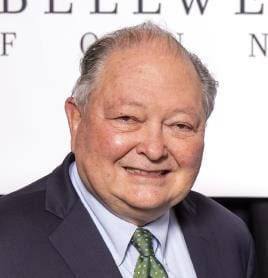
Leading the charge for Rand Ballard, Chief Customer Officer, Vizient Inc., BLF Founding and Educational Sustaining Sponsor, is "implementing predictive and prescriptive analytics."
"This is the wave of the future, and we not only use analytics of the past to make future decisions, but we also have to use AI to help us with predictive analytics to assure we can be three chess moves ahead of what is going to happen," Ballard insisted.
"Gaining insight into clinical behavior, product demand and usage" was next. "We cannot make decisions in supply chain based on price," he continued. "It must be based on clinical evidence of fantastic solutions that effect patients from a quality perspective." Ballard followed up with "reducing/eliminating/preventing stockouts and backorders."
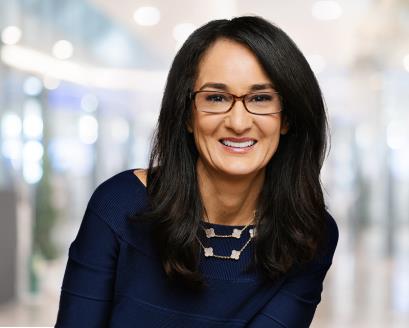
Tina Vatanka Murphy, president and CEO, GHX, BLF Platinum Sustaining and Educational Sponsor, actually opted for four, two of which mirrored Ballard's.
"Each of the challenges in the list has a real and growing impact on how healthcare supply chains operate, and how well they serve patients," Murphy observed. "But these four rise to the top because they shape everything else: Without trusted data, predictive insight, resilient operations and purpose-driven talent, the system can't evolve fast enough — or far enough — to meet the moment. These are the building blocks of a healthcare supply chain built for 2030."
- Attracting, finding and hiring qualified labor/workforce: "People are the engine behind every transformation," Murphy noted. "As supply chain becomes more digital, analytical and strategic, we need talent that's purpose-driven, tech-savvy and ready to lead through ambiguity — not just manage through it. This means rethinking how we attract new talent into the field, elevating supply chain as a leadership career path and building cultures that reflect the values of the next generation."
- Calling for and enabling data integrity: "High-integrity data is the foundation for everything — from automation and AI to clinical alignment and cost containment," she continued. "Enabling this requires tighter cross-functional collaboration, shared standards and a culture where supply chain is recognized as a digital competency, not just an operational one. Without clean, connected data, even the most advanced tools can't deliver reliable insight or scalable value."
- Implementing predictive and prescriptive analytics: "The future of supply chain leadership lies in foresight, not hindsight. Predictive insights and AI-guided actions will separate the systems that bend and adapt from those that break," she said. "Organizations that embed these capabilities into everyday workflows will unlock faster decisions, more resilient operations and a clearer line of sight from supply chain to patient outcomes."
- Reducing/eliminating/preventing stockouts and backorders: "Stockouts don't just interrupt operations, they erode trust and threaten care delivery. Building resilience means anticipating constraints earlier, standardizing response and embedding continuity into every layer of the value chain. It's not about returning to 'normal' — it's about designing a system that can flex with confidence when disruption strikes," she concluded.

Tom Redding, executive vice president and healthcare practice leader, St. Onge Co., Silver Sustaining Sponsor, pinpointed "synchronizing the supply chain" as his top predictive challenge.
"One of the biggest challenges facing supply chain leaders today is the persistence of departmental and organizational silos," Redding indicated. "These silos hinder efficiency, collaboration and overall performance. To operate more effectively, supply chain leaders must take deliberate action to reduce, and ideally eliminate these barriers, fostering cross-functional integration and shared accountability."
Redding followed with "managing clinician demands for faster response time from supply chain management."
"The consumer expectation for rapid delivery, shaped by same-day or next-day home deliveries, is increasingly influencing workplace behavior," he continued. "As a result, healthcare professionals often expect the same level of responsiveness from internal supply chain services. Leaders must strike a balance between meeting urgent requests and prioritizing based on clinical necessity and operational impact. Clear expectations must be set across the organization to prevent 'one-off' emergencies from becoming the norm, as unchecked demand may lead to perceived underperformance and loss of credibility with key stakeholders like physicians and nurses." "Training qualified labor/workforce for succession planning" rounded out Redding's top trio.
"With a growing number of senior leaders nearing retirement, succession planning has become a critical priority," he concluded. "Leaders must proactively identify and develop future talent to ensure a smooth leadership transition. At the same time, the skills required for various roles in the supply chain continue to evolve, driven by technology, analytics and strategic complexity. It's essential to continuously assess these changing requirements and invest in upskilling or reskilling efforts to prevent capability gaps at both the management and leadership levels."
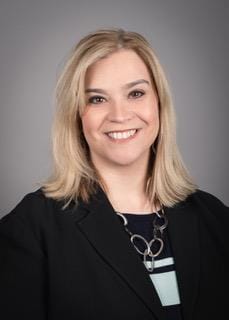
As president and CEO, Healthcare Supply Chain Association (HSCA), BLF corporate sponsor, Angie Boliver embraced more of a bread-and-butter approach. She chose "dealing with product/supply shortages," "calling for more process and product transparency" and "gaining insight into general supply and demand patterns" as her top three.
"Persistent shortages of critical pharmaceuticals and other medical products remain one of the biggest obstacles to uninterrupted patient care," Boliver recognized. "HSCA and its member GPOs are working with policymakers to advocate for solutions to the shortage issue, including measures to create more transparency throughout the supply chain. When a shortage does occur, insight into general supply and demand patterns is paramount. Healthcare delivery organizations hoping to navigate the supply chain should work closely with their GPO partners to anticipate and prepare for potential disruptions."
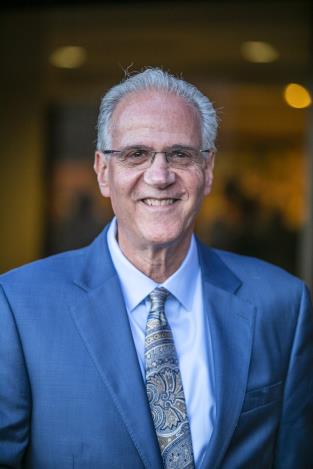
Tom Lubotsky, Bellwether Class of 2022, vice president and Chief Supply Chain Officer, Allina Health, Bronze Sustaining and Educational Sponsor, may have identified a dozen challenges most noteworthy, but his top three concentrated on people serving others in the most expedient way.
- Attracting, finding and hiring qualified labor/workforce: "New capabilities will be required for conducting daily supply chain work that center on carrying out higher value-added tasks (e.g., use of new technologies, predictive forecasting, demand planning)," Lubotsky indicated.
- Gaining insight into clinical behavior, product demand and usage: "Getting keener insight on what products are changing (discontinued or new), being used appropriately (necessary) are just a few of the key reasons here," he continued. "All of this will contribute to managing inventories, On Time in Full (OTIF) requirements and assuring product substitutes when required are accessed to avoid disruptions of care."
- Implementing predictive and prescriptive analytics: "[We] need the tools and capabilities to address the supply chain disruptions that we are now often addressing daily to avoid interruptions in providing daily patient care," he added.

Fred Crans, Bellwether Class of 2020, Outreach Ambassador on the BLF Board of Directors, and business development executive, St. Onge Co., Silver Sustaining Sponsor, may have acknowledged that most matter, he homed in on three in particular that centered on manpower.
For Crans, "attracting, finding and hiring qualified labor/workforce" is No. 1 followed by "retaining qualified labor/workforce as No. 2. "The workforce is the key — PERIOD," he emphasized. "The primary challenge will be filling the workforce pipeline."
"Bracing for geopolitical change that affects product, raw material access, availability, logistics" checks in at No. 3 for Crans, based on current events. "Data is key, he added. "Good data is essential."

Gail Kovacs, Bellwether Class of 2024, and a retired supply chain veteran, recognized the importance of the entire list but lifted three above the rest.
- Bracing for geopolitical change that affects product, raw material access, availability, logistics: "This encompasses current states of concern, will likely be with us for an extended period, has the potential to 'raise the stress level' of individuals, organizations and the supply chain," Kovacs insisted.
- Managing cybersecurity issues, risks (e.g., apps, hardware, software, teams): "Cybersecurity is a comprehensive, paralyzing threat to all elements of operations, requiring constant vigilance and anticipatory plans for remediation," she noted.
- Retaining qualified labor/workforce: "Retaining workforce/labor force is essential to ongoing operations in every area. It also encompasses the ability to attract, educate and maintain the workforce," she added. "All three have significant financial implications that need to be planned for and managed so as to protect the patients, employees, the employer's viability and service to the community."
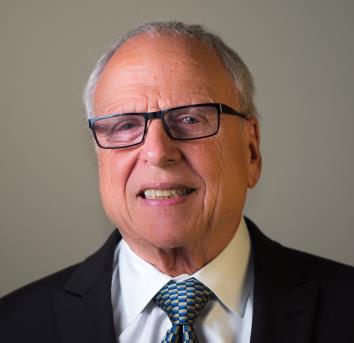
Eugene Schneller, Ph.D., Bellwether Class of 2024, professor, Supply Chain Management, W.P. Carey School of Business, Arizona State University, and renowned lecturer and industry observer, called for overall management improvement, concentrated in more process and product transparency and synchronizing the supply chain.
"Shortages and Stockouts are critical to organizational performance — day after day," Schneller said. "Predictive analytics will allow for efficiency and mastering demand forecasting and data integrity is the foundation for decision making."
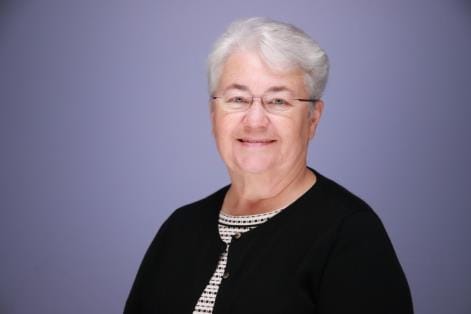
Bellwether League Foundation Board Chairman Barbara Strain, Bellwether Class of 2021, identified 10 as being noteworthy but singled out three as the leading indicators influencing the rest.
For Strain, "gaining insight into clinical behavior, product demand and usage; "mastering demand/supply forecasting;" and "calling for and enabling data integrity, IT collaboration" represent instigators of improvement.
"If we can do all three effectively and as quickly as possible, then some of the other challenges may be improved, and it will be easier to handle new challenges," she predicted.